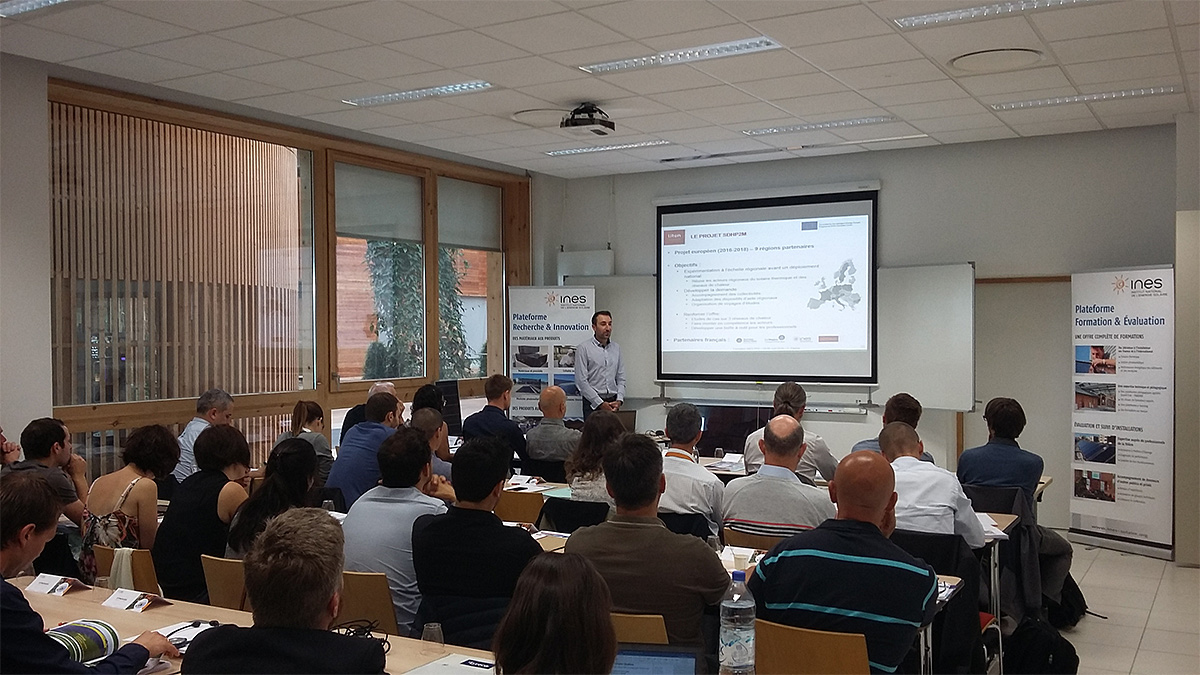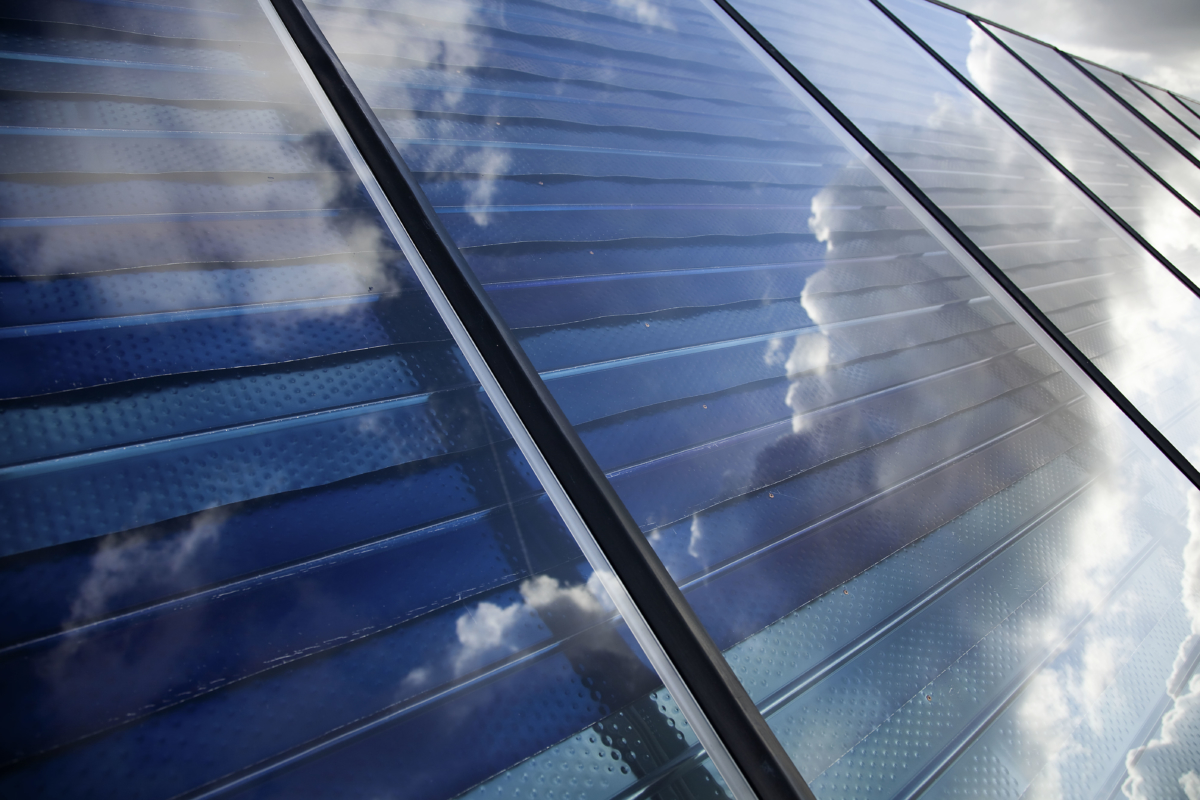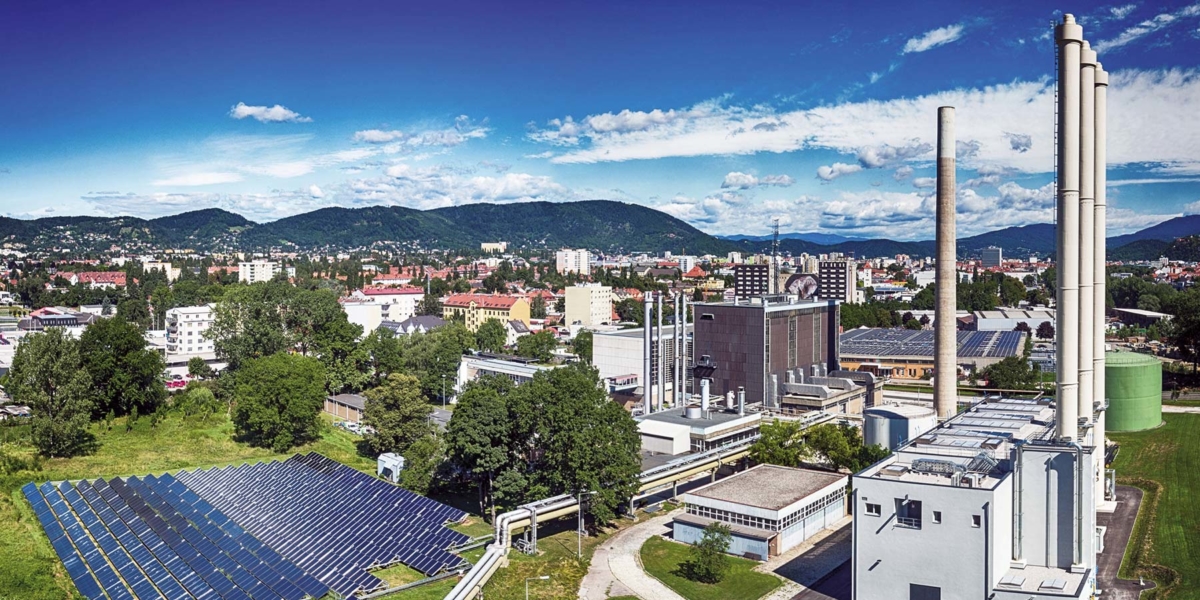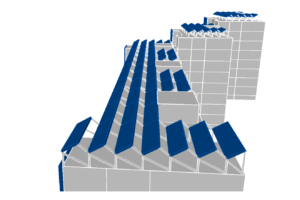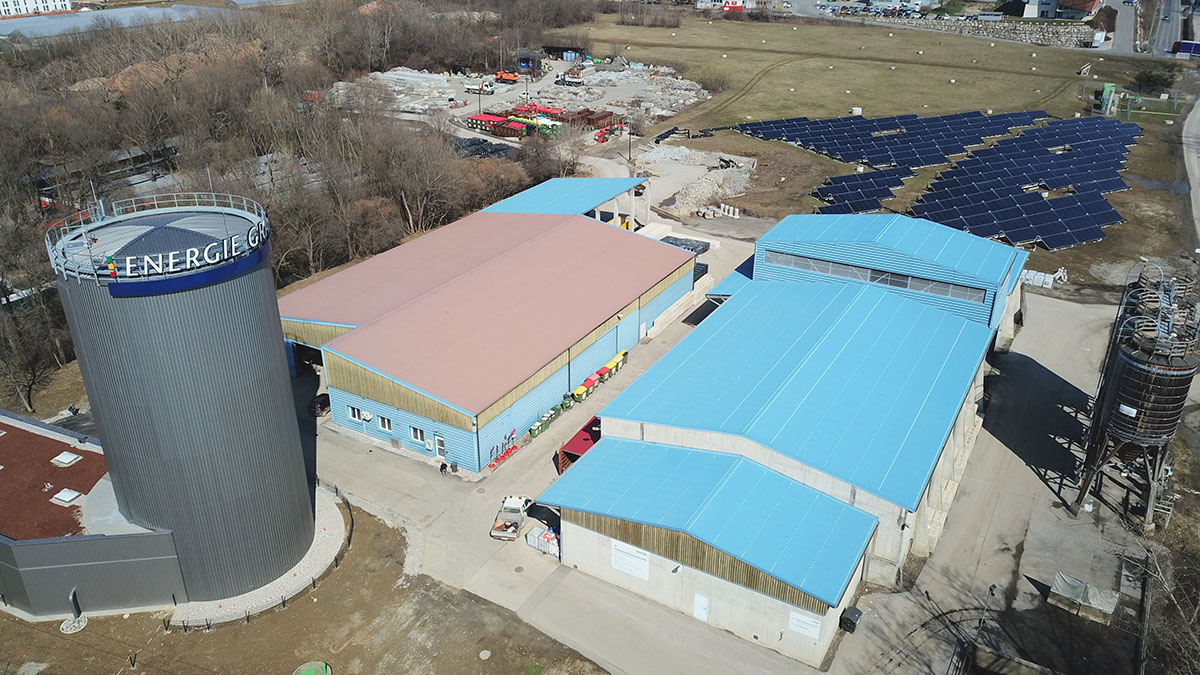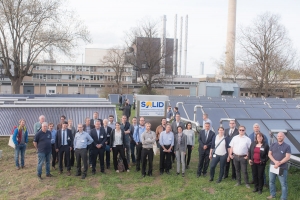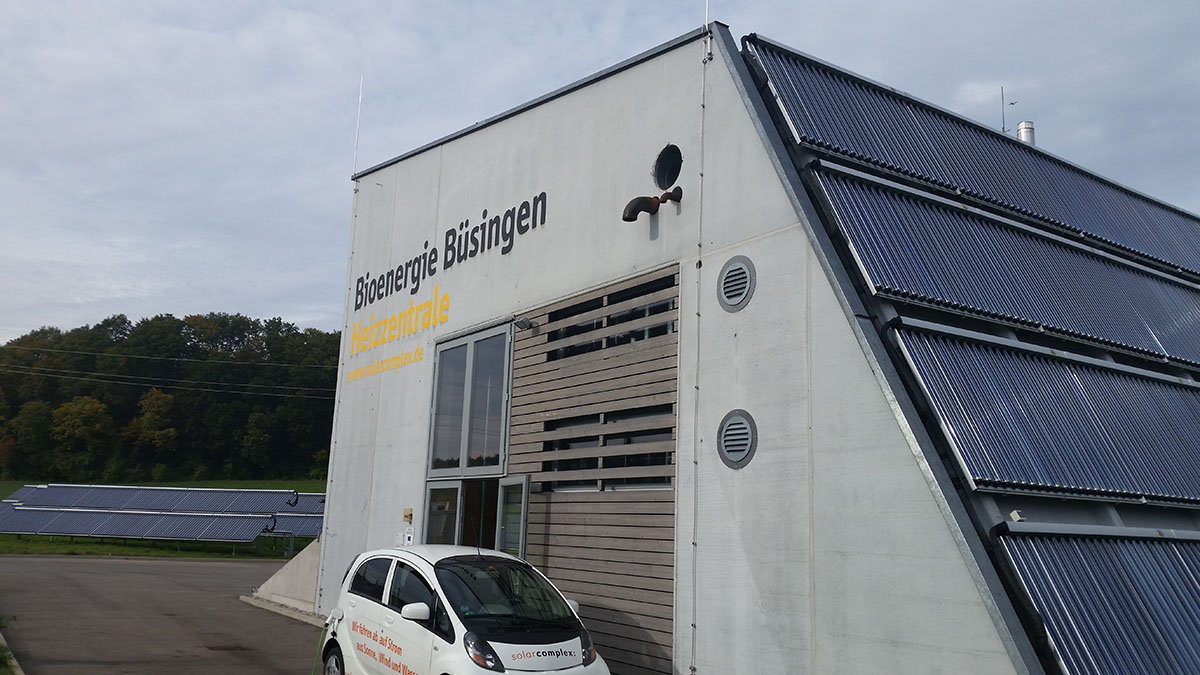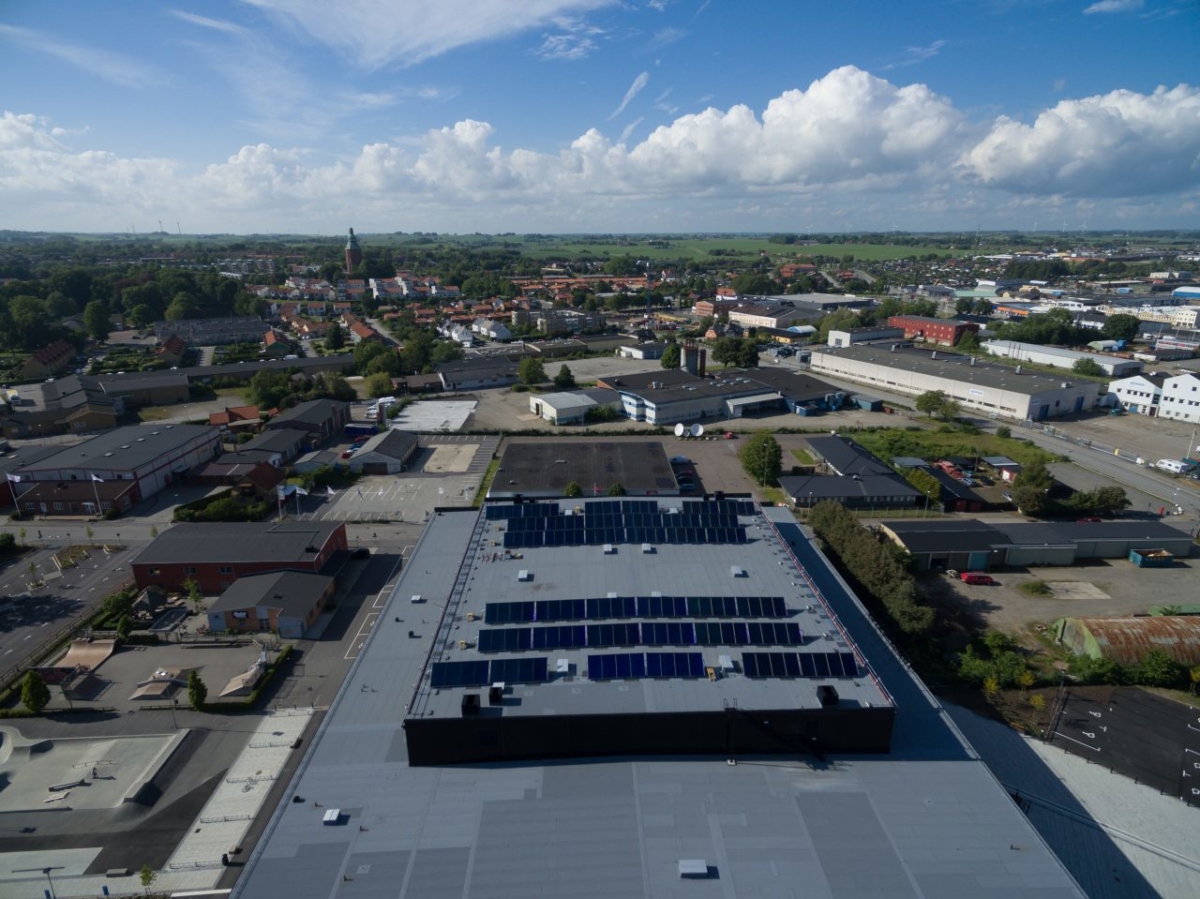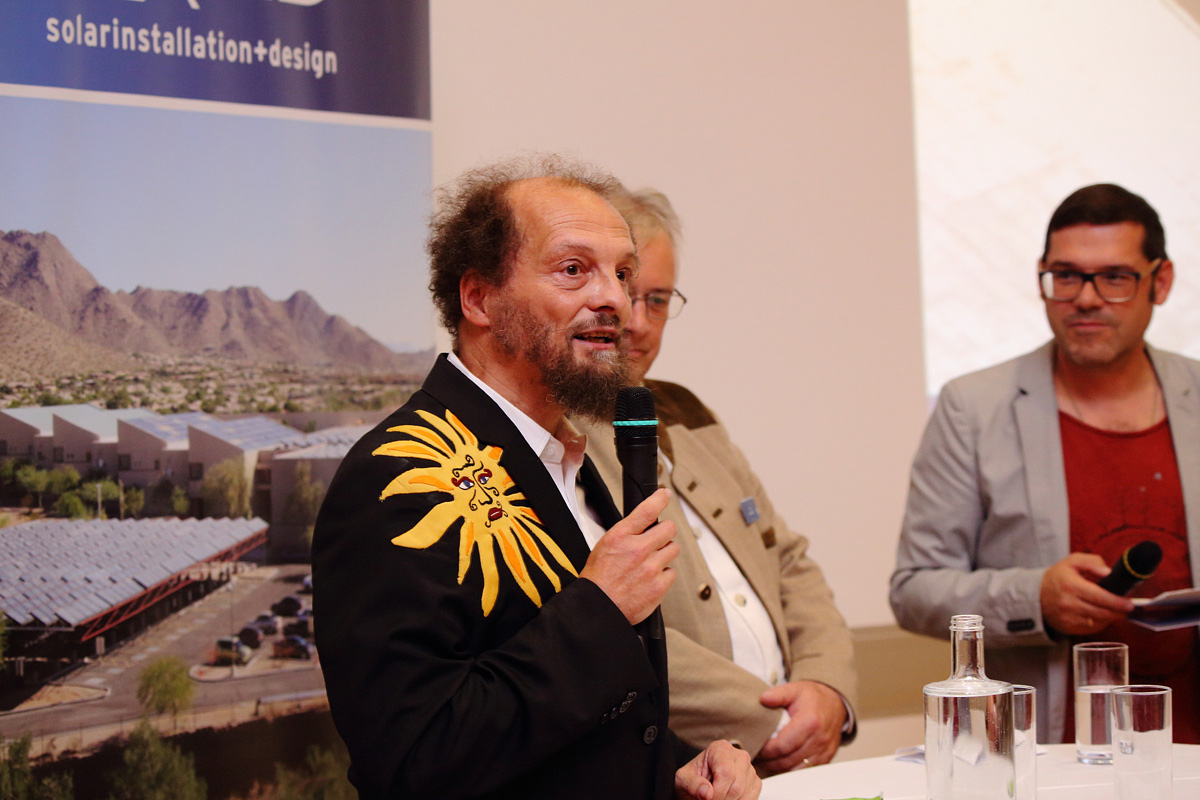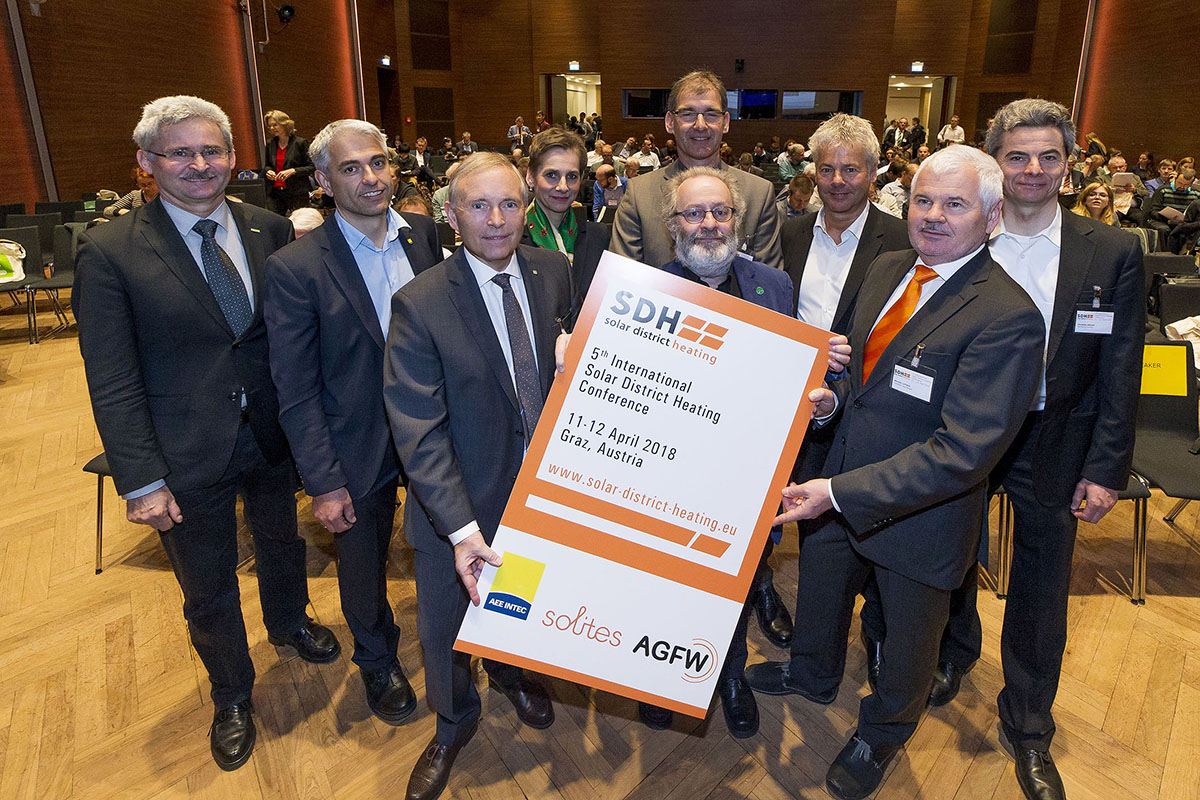Successful training session for Solar District Heating in France
An expert training session has been organized on the 5th and 6th of June 2018 at the French National Institute for Solar Energy. More than 30 participants working in engineering offices, district heating operators, city technical services or project developers took part in this event. Regarding the success of this training, a second session is planned for the end of 2018.
The development of solar district heating is currently experiencing a strong dynamic that continues to accelerate. In Europe, this strong progression was until now carried by Sweden, Germany, Austria, and the inevitable Denmark … but it begins to spread in France!
Commissioned in 2014 in Balma, the first French solar district heating plant has since then been joined by four other installations, which should be followed by three new projects in 2018. With many other projects being considered, France seems to be at the beginning of a strong development of solar district heating.
In order to support this dynamic, the French National Institute for Solar Energy, AURA-Energy Environment and ADEME organized on June 5th and 6th 2018 a training entirely dedicated to solar district heating. This exceptional training brought together international experts with decades of experience, as well as French actors on the initiative of the first national projects. Designed for engineering offices and project developers wishing to build skills on solar heating networks, these two days addressed the theme with a high level of technicality, maintaining a very operational approach.
The seminar addressed technical, administrative and economic issues at different stages of a project: pre-study, sizing, design, implementation, commissioning, operation and maintenance. It has been punctuated with feedback from the Danish, Austrian and French experts and case studies with implementation on a calculation tool.
This training was conducted with the participation of ADEME, AURA-EE, CEA, INES INDDIGO, PlanEnergi, SOLID and Tecsol. It was supported by ADEME and the Horizon 2020 project SDHp2m.
Author: Cédric Paulus, CEA tech/ INES – French National Solar Energy Institute
